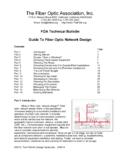Transcription of The OSI Model: Understanding the Seven Layers of …
1 The OSI Model: Understanding theSeven Layers ofComputer Reference Series of White PapersIntroductionThe Open Systems Interconnection (OSI) model is a reference tool for Understanding data communicationsbetween any two networked systems. It divides the communications processes into Seven Layers . Each layerboth performs specific functions to support the Layers above it and offers services to the Layers below it. Thethree lowest Layers focus on passing traffic through the network to an end system. The top four Layers comeinto play in the end system to complete the white paper will provide you with an Understanding of each of the Seven Layers , including their functionsand their relationships to each other.
2 This will provide you with an overview of the network process, whichcan then act as a framework for Understanding the details of computer the discussion of networking often includes talk of extra Layers ,this paper will address these unofficiallayers as , this paper will draw comparisons between the theoretical OSI model and the functional TCP/IP TCP/IP has been used for network communications before the adoption of the OSI model , it supportsthe same functions and features in a differently layered Overview of the OSI model Paul Simoneau, Global Knowledge Course Director, network +, CCNA, CTPThe OSI model : Understanding theSeven Layers of computer NetworksCopyright 2006 Global Knowledge Training LLC.
3 All rights model offers a generic means to separate computer networking functions into multiple of these Layers relies on the Layers below it to provide supporting capabilities and performs support tothe Layers above it. Such a model of layered functionality is also called a protocol stack or protocol suite .Protocols, or rules, can do their work in either hardware or software or, as with most protocol stacks, in a com-bination of the two. The nature of these stacks is that the lower Layers do their work in hardware or firmware(software that runs on specific hardware chips) while the higher Layers work in Open System Interconnection model is a Seven -layer structure that specifies the requirements for commu-nications between two computers.
4 The ISO (International Organization for Standardization) standard 7498-1defined this model . This model allows all network elements to operate together, no matter who created theprotocols and what computer vendor supports main benefits of the OSI model include the following: Helps users understand the big picture of networking Helps users understand how hardware and software elements function together Makes troubleshooting easier by separating networks into manageable pieces Defines terms that networking professionals can use to compare basic functional relationships on differ-ent networks Helps users understand new technologies as they are developed Aids in interpreting vendor explanations of product functionalityLayer 1 The Physical LayerThe physical layer of the OSI model
5 Defines connector and interface specifications, as well as the medium(cable) requirements. Electrical, mechanical, functional, and procedural specifications are provided for sendinga bit stream on a computer 2006 Global Knowledge Training LLC. All rights 3 Components of the physical layer include: Cabling system components Adapters that connect media to physical interfaces Connector design and pin assignments Hub, repeater, and patch panel specifications Wireless system components Parallel SCSI (Small computer System Interface) network Interface Card (NIC)In a LAN environment, Category 5e UTP (Unshielded Twisted Pair) cable is generally used for the physical layerfor individual device connections.
6 Fiber optic cabling is often used for the physical layer in a vertical or riserbackbone link. The IEEE, EIA/TIA, ANSI, and other similar standards bodies developed standards for this :The Physical Layer of the OSI model is only part of a LAN (Local Area network ).Layer 2 The Data Link LayerLayer 2 of the OSI model provides the following functions: Allows a device to access the network to send and receive messages Offers a physical address so a device s data can be sent on the network Works with a device s networking software when sending and receiving messages Provides error-detection capabilityCommon networking components that function at layer 2 include: network interface cards Ethernet and Token Ring switches BridgesNICs have a layer 2 or MAC address.
7 A switch uses this address to filter and forward traffic, helping relievecongestion and collisions on a network 2006 Global Knowledge Training LLC. All rights and switches function in a similar fashion; however, bridging is normally a software program on a CPU,while switches use Application-Specific Integrated Circuits (ASICs) to perform the task in dedicated hardware,which is much 3 The network LayerLayer 3, the network layer of the OSI model , provides an end-to-end logical addressing system so that a packetof data can be routed across several layer 2 networks (Ethernet, Token Ring, Frame Relay, etc.)
8 Note that net-work layer addresses can also be referred to as logical , software manufacturers, such as Novell, developed proprietary layer 3 addressing. However, the net-working industry has evolved to the point that it requires a common layer 3 addressing InternetProtocol (IP) addresses make networks easier to both set up and connect with one Internet usesIP addressing to provide connectivity to millions of networks around the make it easier to manage the network and control the flow of packets, many organizations separate theirnetwork layer addressing into smaller parts known as use the network or subnet portion ofthe IP addressing to route traffic between different networks.
9 Each router must be configured specifically forthe networks or subnets that will be connected to its communicate with one another using routing protocols, such as Routing Information Protocol (RIP)and Open version of Shortest Path First (OSPF), to learn of other networks that are present and to calculate thebest way to reach each network based on a variety of criteria (such as the path with the fewest routers).Routers and other networked systems make these routing decisions at the network passing packets between different networks, it may become necessary to adjust their outbound size toone that is compatible with the layer 2 protocol that is being used.
10 The network layer accomplishes this via aprocess known as fragmentation. A router s network layer is usually responsible for doing the reassembly of fragmented packets happens at the network layer of the final destination 2006 Global Knowledge Training LLC. All rights of the additional functions of the network layer are diagnostics and the reporting of logical variations innormal network operation. While the network layer diagnostics may be initiated by any networked system, thesystem discovering the variation reports it to the original sender of the packet that is found to be outside nor-mal network variation reporting exception is content validation calculations.



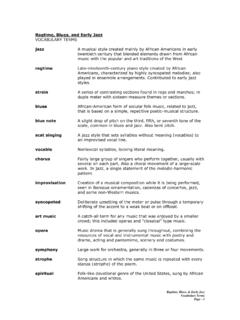

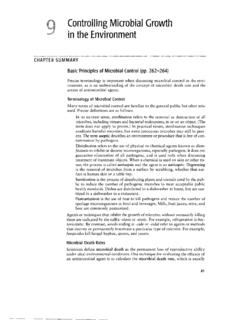
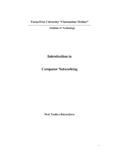
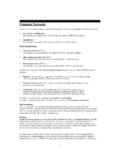

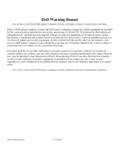
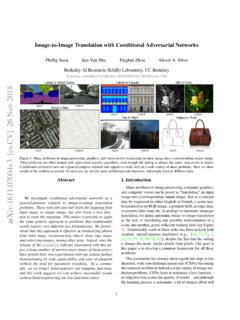
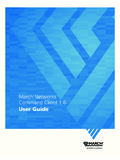
![ABSTRACT arXiv:1409.1556v6 [cs.CV] 10 Apr 2015](/cache/preview/4/e/0/e/4/4/2/c/thumb-4e0e442c20fc4f8e108fa20a1095af07.jpg)

